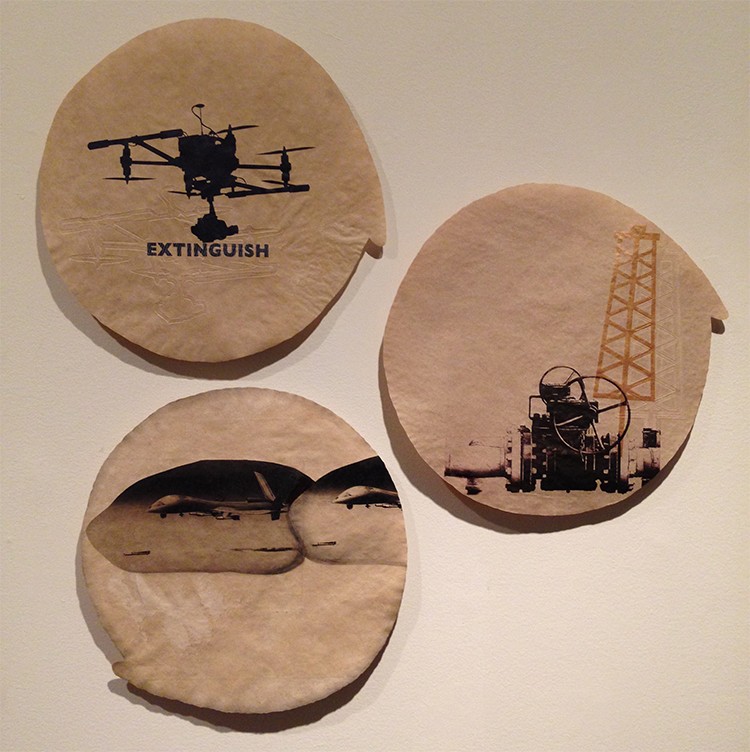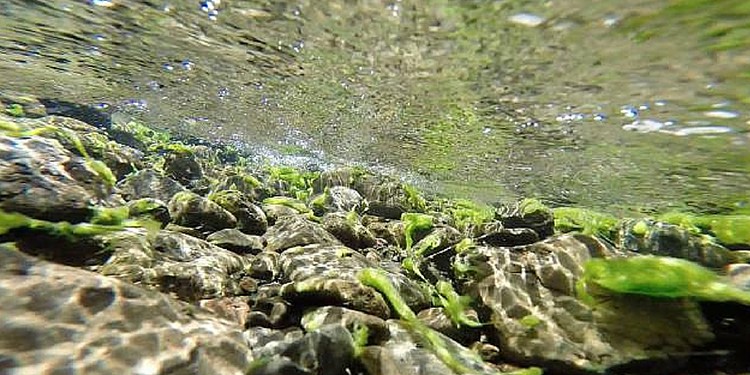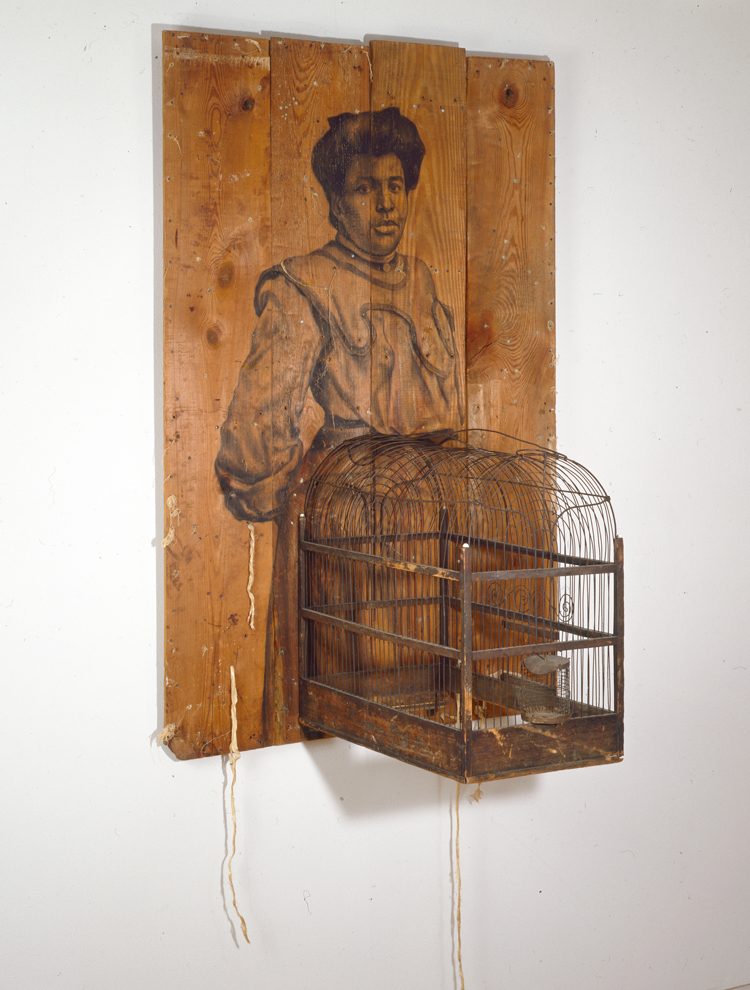
Installation view of Helen Frederick’s Acts of Silence Intersections contemporary art project
Museums can sometimes be considered intimidating spaces, complete with a flurry of visitors, pristine paintings, and immaculate sculptures. But venture into the galleries and there’s much to be gained. Today we look at Helen Frederick’s Acts of Silence as an example of how each and every exhibition has something to offer museum-goers; it’s just a matter of knowing what to look for.
- 1) Keep calm and carry on
Frederick, an artist and printmaking professor at George Mason University, makes a habit of contemplative papermaking. As she explains in an early essay, hers is a storied process of interacting with materials, textures, and overlays to create paper produced by hand. This same reflective mindset is useful in approaching museums—taking time to consider and experience the quietude of the works on view.

Trees Darker Than the Night, 2015. Two pulp painting (42 x 22 in. each) and three solar prints (14.5 in. diameter each)
Sudip Bose echoes this in a review of Johannes Vermeer paintings at the National Gallery of Art, in which Bose writes that pensiveness has given way to the blockbuster and calls into question the value of an enriching museum experience. What Bose drives home is that for artwork in general, and works by Vermeer in particular, each piece should be a study in quiet reflection rather than rushed consumption.
-
2) Mix up your media
Too often, exhibitions pigeonhole visitors into one media over another. Frederick’s Acts of Silence stands in contrast to this, encouraging viewers to explore works of varied textures, values, and aesthetics to get at the core of the installation’s themes – those of the environment and longevity. Frederick’s Extinguish, for instance, elevates the warfare debate, displaying each piece on handmade paper (a nod to nature in a world of artificiality).
It’s a concept worth mulling over. What effect does one media have over another? Surely texture plays a pivotal role. In fact, the Museo del Prado now includes 3-D printed masterworks for blind visitors to the museum—a move indicative of the experiential nature of depth, texture, and media.
- 3) Lean in
Equally important on your next museum visit is taking in the works on view at close range as well as at a distance. Frederick’s exhibition at the Phillips serves as a prime example, drawing visitors into the installation’s second room with a series of paintings that, from afar, appear to represent an empty field at sunset, but upon further inspection, reveal themselves as complex studies of light and tone. The next time you’re in a museum, try viewing works at a distance as well as up close to see what, if any, changes can be detected. What do those subtleties tell you about the work?

Helen Frederick, Acts of Silence (still), 2015. Sound and video projection over primordial forest imagery, Voice: Helen Frederick; Video collaboration: Sean Watkins; Photo credit: Matt Nolan
Stephanie Herdrich, assistant research curator in the Metropolitan Museum of Art, takes this to a new level, harnessing Instagram to zero in on the minute, yet terrifically dazzling, details of the institution’s works. Much like quiet contemplation, experimenting with different levels of detail can bring to life nuance you might otherwise miss.
- 4) Compare and contrast
Another concept to think through on your next museum visit is how the works on view fit into a broader cultural context. In particular, what parallels can you draw between the selected works and those of comparable theme from a different time period or region? At the Phillips, Frederick’s works are displayed alongside Morris Graves’s, an abstract expressionist whose oeuvre captures the Pacific Northwest in its rawest beauty. In its second room, Acts of Silence brings this to bear, juxtaposing Frederick’s tonal works with Graves’s seabird compositions.
Gillian Daniel draws similar parallels on her Fash of the Titans Instagram feed, pairing classical art work with today’s high fashion. The unlikely juxtapositions reinforce the value of reflective study to glean new meaning from an exhibition’s selected works.
- 5) Share your own interpretations
Frederick’s Acts of Silence also encourages viewers to interpret the works on view in their own way. An earlier blog post tackles just this in its survey of the many ways viewers have interacted with the series, effectively adding their mark to the collection online.
Appropriately, many exhibitions now feature signature hashtags. One question to ask yourself in looking through submitted photos is what works inspired the most photos? Why do you think that is? The Getty Museum’s #GettyInspired series celebrates the nuance visitors add to a museum’s collection.
Museums, then, offer visitors a moment of quietude, layers of meaning, new perspectives, cultural nuance, and the opportunity to share in novel ways. Armed with these five tips, your next museum visit is sure to be an inspired one.
Angelica Aboulhosn, Marketing & Communications Volunteer





